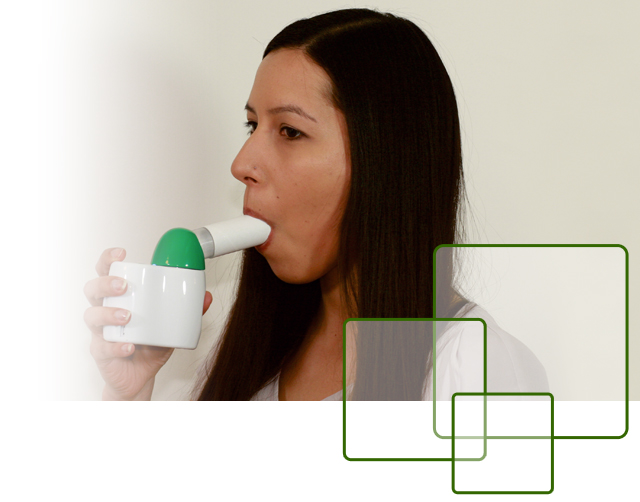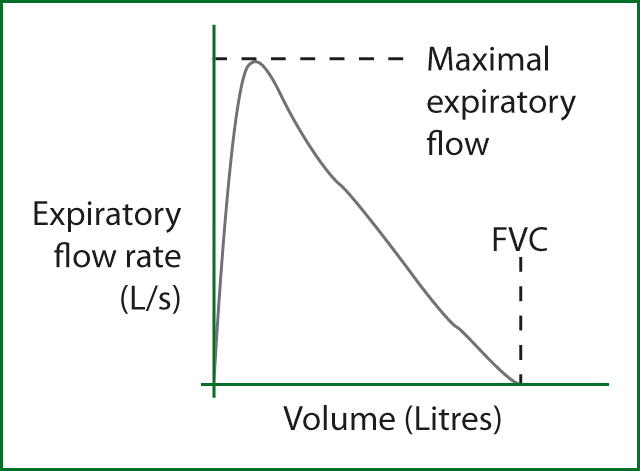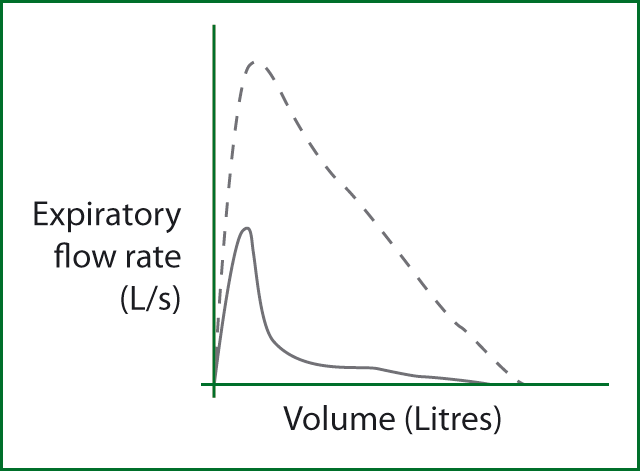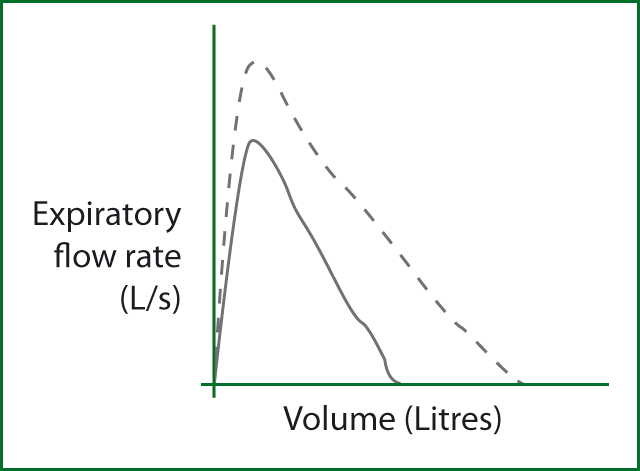SpiroConnect® - Physiology

Spirometry is the measurement of flow and volume from a forced exhalation and is used to diagnose and monitor a variety of respiratory diseases. The two most common type of respiratory disease are COPD and asthma.
COPD – Definition
"Chronic Obstructive Pulmonary Disease (COPD), a common preventable and treatable disease, is characterized by persistent airflow limitation that is usually progressive and associated with enhanced chronic inflammatory response in the airways and the lung to noxious particles or gases. Exacerbations and comorbidities contribute to the overall severity in individual patients." - www.goldcopd.org
Asthma – Definition
"Asthma Asthma is a common chronic disorder of the airways that is complex and characterized by variable and recurring symptoms, airflow obstruction, bronchial hyperresponsiveness, and an underlying inflammation. The interaction of these features of asthma determines the clinical manifestations and severity of asthma and the response to treatment." - www.nih.gov
Main Spirometry Parameters:
(FVC) - Forced vital capacity - is the volume of air that can forcibly be blown out after full inspiration, measured in liters
(FEV1) - Forced expiratory volume in 1 second - is the volume of air that can forcibly be blown out in one second, after full inspiration
FEV1/FVC ratio (FEV1%) - the ratio of FEV1 to FVC
(FEF) Forced expiratory flow - is the flow (or speed) of air coming out of the lung during the middle portion of a forced expiration. It can be given at discrete times, generally defined by what fraction remains of the forced vital capacity (FVC). The usual intervals are 25%, 50% and 75% (FEF25, FEF50 and FEF75). It can also be given as a mean of the flow during an interval, usually between 25% and 75% of FVC (FEF25–75)
(FIF) Forced inspiratory flow - is the flow (or speed) of air going into the lung during the middle portion of a forced inspiration. It is most commonly measured over the interval of 25% to 50% or 25% to75% of FVC (FIF25-50 or FIF25-75)
(PEF) Peak expiratory flow - is the maximal flow (or speed) achieved during the maximally forced expiration initiated at full inspiration
(TV) Tidal volume - is the amount of air inhaled and exhaled for each breath normally at rest
(MVV) Maximum voluntary ventilation - is a measure of the maximum amount of air that can be inhaled and exhaled within one minute
(FET) Forced Expiratory Time - measures the length of the expiration in seconds during a forced spirometry maneuver
(SVC) Slow vital capacity - is the maximum volume of air that can be exhaled slowly after slow maximum inhalation
Identifying abnormalities with flow-volume curves
Normal spirometry:

Obstructive disorder:
In this example of a patient with obstructive airways disease, the peak expiratory flow (PEF) is reduced and the decline in airflow to complete exhalation follows a distinctive dipping (or concave) curve.

Severe obstructive disorder:
In a severe airflow obstruction, particularly with emphysema, the characteristic 'steeple pattern' is seen in the expiratory flow trace.

Restrictive disorder:
"The pattern observed in the expiratory trace of a patient with restrictive defect is normal in shape but there is an absolute reduction in volume." - www.brit-thoracic.org/copd
